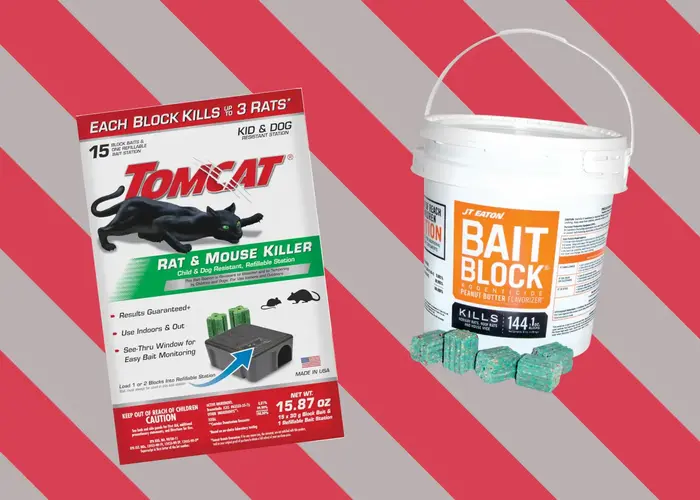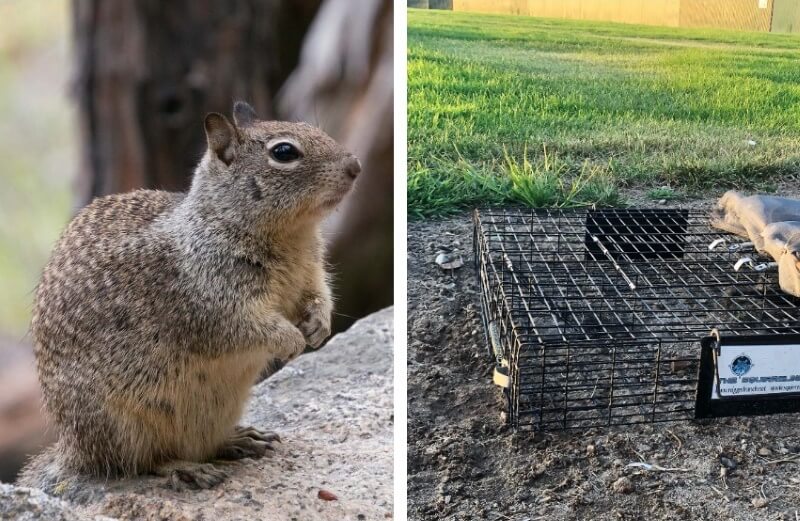

When you’ve gone to the trouble of landscaping a beautiful yard with flowers, shrubs and maybe even a delicious looking veggie patch, it can be heartbreaking when the space is invaded by voles. Voles can be incredibly destructive, chewing through bulbs, seedlings, stems and plant roots, leaving your landscaped space looking a mess. Worst still, voles are highly productive and they can multiply at an incredible rate. So, unless you learn how to get rid of voles, you could struggle to reclaim your yard.
So, in this article, we’ll explore vole pest problems in more detail and the various methods you can explore in your quest for how to get rid of voles in your yard. This should help you to eliminate the vole problem, so you can get back to enjoying your landscaping.
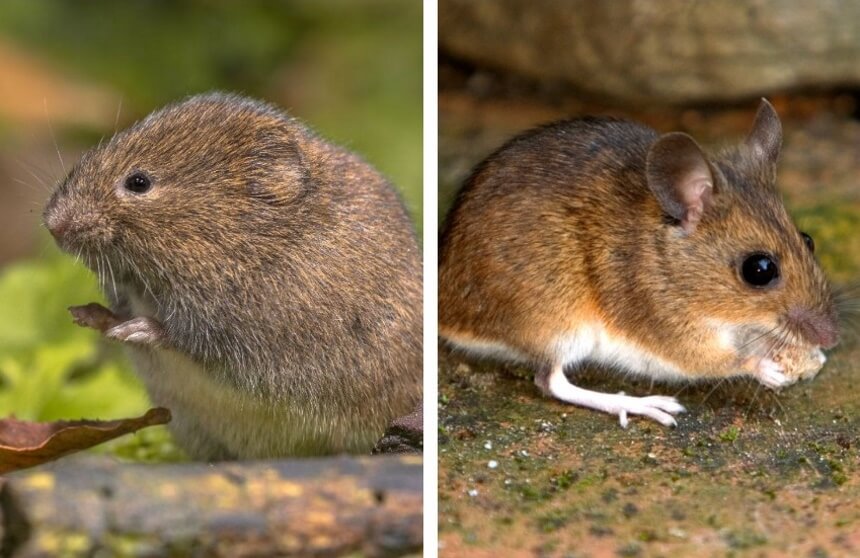 While they may have a similar name, voles are not a species of mole. While both animals tunnel through your yard and are small, dark colored mammals, they are different. Although voles tend to be underground, if you do see them up close, you will see that they look very different.
While they may have a similar name, voles are not a species of mole. While both animals tunnel through your yard and are small, dark colored mammals, they are different. Although voles tend to be underground, if you do see them up close, you will see that they look very different.
Voles are a small, stocky rodent that actually have a greater resemblance to a field mouse. However, voles have small rounded ears that you may not see due to their fur, their eyes are small and they have short tales. The fur is typically thick, but it can vary in color from gray to light brown.
There are some key differences between voles and mice. While vole eyes and ears are quite small, mice have noticeably large eyes and ears. Mice also have a very long tail that is almost twice the length of its body. Finally, while voles have a rounded snout, mice have a pointed snout.
There are approximately 50 species of vole, but there are several that are more common in the U.S. If you are looking into how to get rid of voles, the chances are that you are dealing with one of three common vole species.

Adult prairie voles can grow to 7 inches in length with fur that ranges from black to dark brown, with black or yellowish tips, depending on its dominant hair color. Prairie voles are active year round, but they tend to vary their activity in summer and winter.

Both male and female meadow voles have multi colored fur that can include brown, orange and gray tones. They grow to an average length of 6.5 inches and they tend to prefer open, grassy areas, which not only provide burrow cover, but also nesting material.
Meadow voles mate between March and November, at which time the females can become more aggressive, but they are not typically aggressive towards humans.
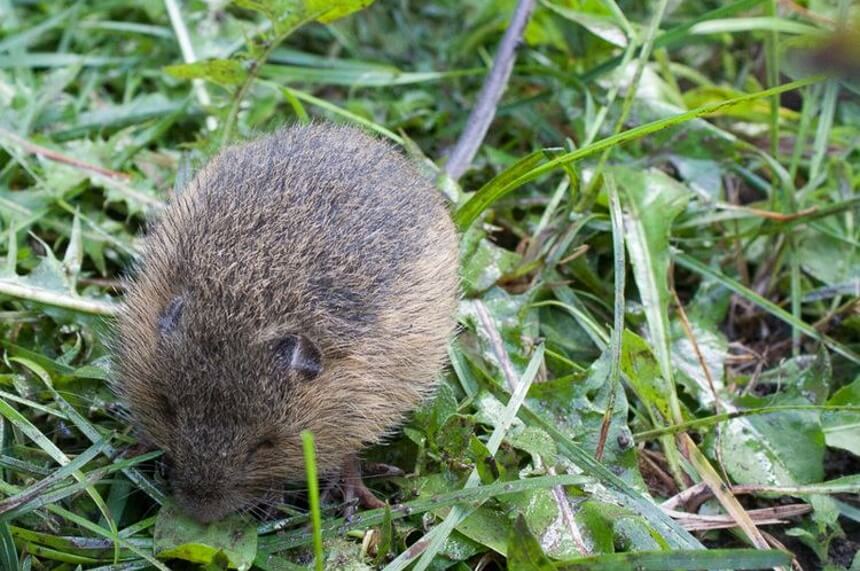
Long tailed voles are found throughout Canada and western U.S, and they are less particular about their habitats. They can be found in meadows, grassy areas, forests and even river banks. They are mainly nocturnal and are active year round.
However, unlike other vole species, long tailed voles are not known to construct underground tunnels, so they tend to be less of an issue for property damage.
Most vole species are active year round, but they may be more or less active depending on the climate and conditions. For example, voles may become more nocturnal in summer and more active in the daytime during winter.
The vole mating season typically lasts from spring through to fall, but most species tend to mate between late spring and early fall. Although voles only live for approximately one year, the gestation period is only 16 to 24 days, with three to eight pups in a typical vole litter. This means that a female can have as many as 10 litters in a year.
Both female and male voles only stay with their parents only a short time and female pups become sexually mature from approximately 13 days old. This means that a small vole problem can quickly develop into an infestation, due to the vole life cycle.
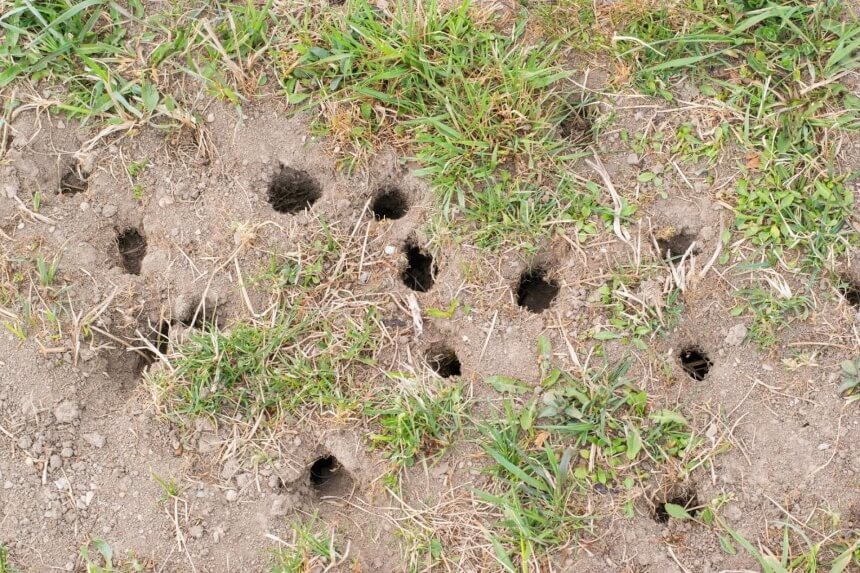
However, one of the most frustrating aspects of a vole problem is that they don’t simply much on the grass. They actually eat the roots and base of the grass stems, leaving the rest to rot. This means that very quickly, you will start to see patches of dead or damaged grass all over your yard.
Unfortunately, eating the roots of grass, young trees and shrubs is not the only way that voles can damage your yard. As the colonies continue to grow, voles will tunnel around under your yard. These tunnels are close to the surface of the lawn, which can cause crumbling and falling ground.
If you have a more elaborate yard, you may find that voles will eat grass, flowers, and even some vegetables. Voles particularly enjoy tubers and vegetable roots, which means that they can quickly ruin rows of vegetables.
Another potential harm that voles can cause is the risk of disease. As with rodents, voles can carry problematic bacteria and viruses, which can be transmitted through their droppings and urine. Since these materials could be all over your yard, you could end up having to dig up and throw away any soil or produce from your garden.
As we’ve discussed, voles can cause serious damage, but how do you know if voles are tunneling away under your yard?
The first thing you may notice is partially eaten root vegetables, such as potatoes or carrots in your garden. Voles like to dig under your vegetable beds, pulling down veggies to eat them. You may also find that voles have been nibbling on your flower bulbs.
Chewed up bark on shrubs or near the base of trees can also be a sign of a vole problem. Voles have front teeth that can leave side by side groves approximately 1/4 inch apart as they gnaw on the bark.
Another sign of a vole infestation is that there are shallow tunnels all over your yard. The tunnels are typically near the surface and approximately two inches wide. Voles are particularly active in early springtime, when they start feeding on their favorite foods including grass and bulbs.
So, now we’ve covered the basics of voles and vole infestations, you’ll need to know how to get rid of voles.
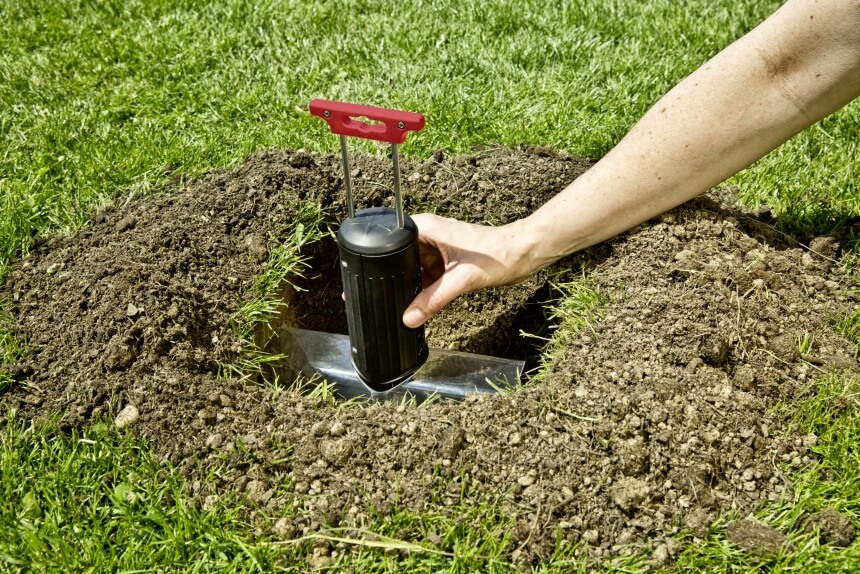
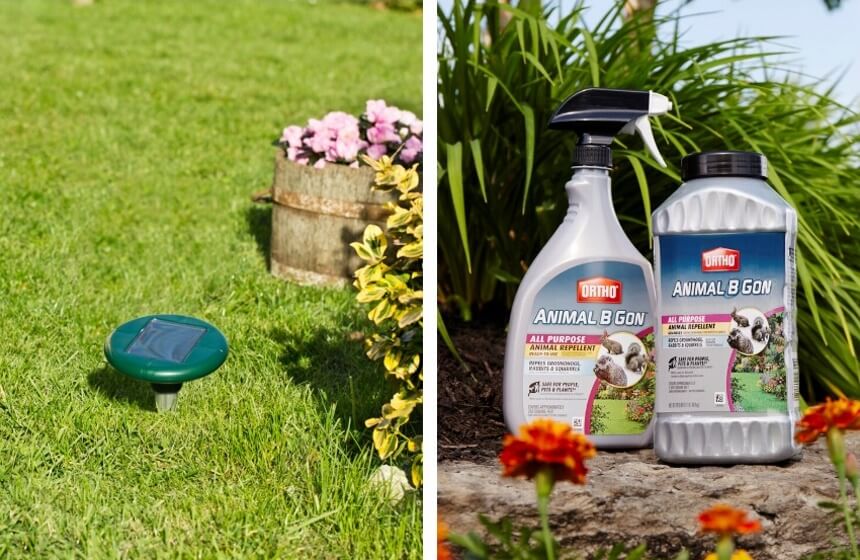
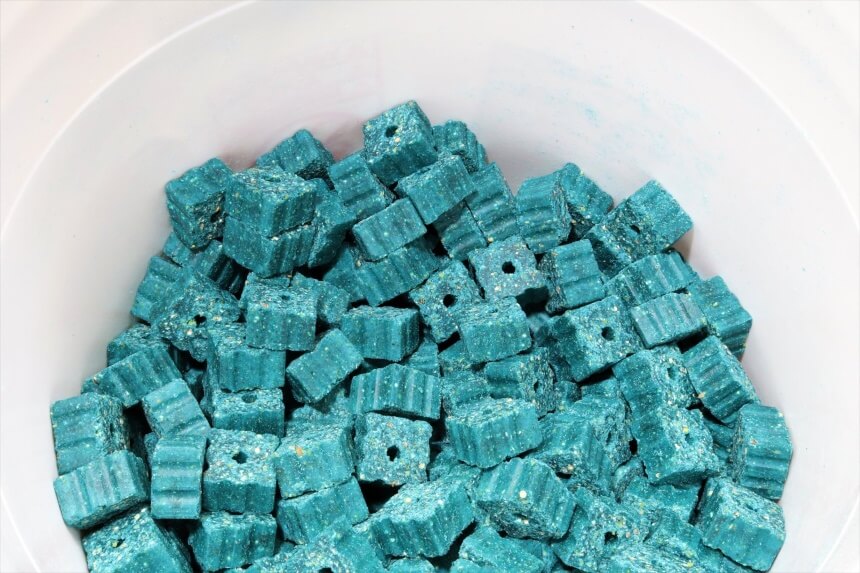
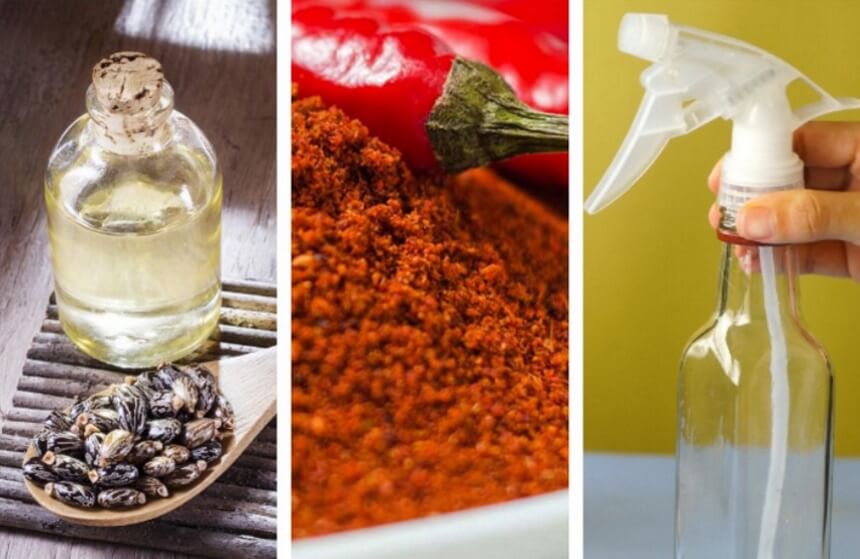
Now that we’ve explored some of the best ways of how to get of voles in winter or summer, we’ll discuss prevention measures. This can help dissuade voles from returning from your yard.
Voles are quite shy and don’t like feeding out in the open. So, one of the easiest ways to prevent a vole problem is to modify their potential habitat. Keep your lawn mowed, maintain your snow removal, remove any dense ground cover and keep the mulching around shrubs or trees light. This will make your yard less appealing to any voles.

As we discussed earlier, natural repellents can be a great way to discourage voles in your yard. Once you have eliminated your vole problem, continue using natural repellents in hotspots around your lawn and landscaping.
If you don’t like the idea of using castor oil or spicy substances, as you have small children or pets, you could consider a light sprinkle of coffee grounds on the soil. Just avoid being heavy handed, as coffee grounds can cause nitrogen depletion in the soil, hindering growth of plants in the area.
You can discourage nibbling on bulbs in your planting area by adding gravel around the bulbs in the planting hole. As you plant bulbs you can also powder them with fungicide to keep any voles at bay.
If you are concerned about voles invading your veggie garden, protect your plants by fencing the area with mesh or hardware cloth. Bury it up to 10 inches deep and keep it at least 12 inches above the ground. Voles are not good climbers, so this will help to keep them from your homegrown produce.
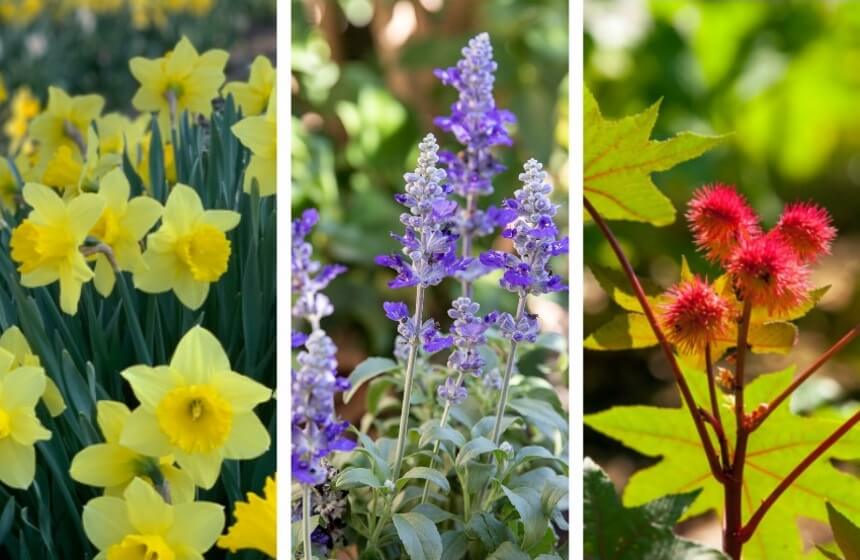
Daffodils: While they look great, particularly when the weather starts to warm up, daffodils are poisonous and will repel voles. Daffodils are easy to grow and can add a bright warmth to your landscaping.
Lenten Rose: This is a hardy flower that blooms in early spring. The leaves are glossy and evergreen, but they are tough and will discourage voles.
Salvia: Salvia has a strong smell that voles will not go near. There are various types of salvia including annual and perennial. You can also choose red or blue kinds that will best complement your landscape decor.
Trout Lily: Trout lily is a native plant to North America and it produces lovely yellow flowers every year. This not only creates an attractive feature in your yard, but it has vole resistant properties.
Castor Bean: Castor bean is not a great choice if you have pets or children playing in the yard, as it does contain the highly poisonous ricin compound. However, it can be a great way to discourage voles from your flowerbeds.
Jack in the Pulpit: This plant has lovely foliage in spring and summer, but it also produces bright colored berries in the fall, which can liven up your landscaping when other plants are starting to lose their colors.
If you are having vole issues and you’ve tried a number of methods to get rid of voles, you may wonder if it is time to call in a professional. If you have an infestation, or you are worried about your prized garden, it may be a good idea to speak to a professional.
Generally, most professionals will perform a full inspection of your yard. An experienced professional will be able to identify any vole damaged areas of the yard and search for vole burrows and paths. They will also check for any other indications of pest infestations that may worsen a vole problem.
Once they have performed an initial inspection, the pest control specialist will develop a management plan to address the vole problem. This could involve a combination of habitat modification and trapping, depending on the severity and characteristics of your property.
It is highly unusual to need to get rid of voles in a house, so if you have seen signs of a vole indoors or have found vole damage inside, be sure to discuss this with your pro.
After you agree to the management plan, the pest control can begin. Your professional will detail all the methods being implemented, so you can make sure that any pets or small children are kept clear of anything that could be potentially harmful.
When the control treatment has concluded, your pest controller will provide recommendations for any follow up treatments that may be necessary. This could include baiting or repellents to discourage voles from returning to your property.
While we’ve aimed to provide a comprehensive guide to how to get rid of voles, you may still have some questions. So, here we’ll provide answers to some common questions.
Generally, voles do not present a physical threat to humans. Although some species of voles can become aggressive when breeding and nesting, this is not directed towards humans. However, just because voles may not be a physical threat to you, they can still be harmful. When voles defecate or urinate around your property, they may introduce bacteria, parasites and diseases such as salmonellosis into your yard. These conditions may be transmissible to domestic pets and people.
This means that you may need to discard any produce from your veggie patch or even soil to prevent or limit exposure.
Getting rid of voles in winter can seem a little more challenging, particularly if the ground is covered with snow. However, you can employ the same techniques as you would in summer. Place traps around feeding areas or near well-used tunnels, if appropriate and permitted, use baiting, and repellents. You may need to be a little more diligent about these products, as any rainfall may make them less effective.
You should also try to keep any mulch or other coverings as light as possible to provide as little shelter and protection for the voles as possible.
Once you’ve got rid of voles, you may be left looking at a yard that appears devastated. However, it is possible to quickly get to grips with fixing vole damage. Firstly, gently rake the entire surface of the lawn to break up any debris or excrement inside the vole tunnels to promote lawn growth. You should also fill in any vole pathways using top soil. Since voles tend to tunnel near to the surface, these should be easy to spot.
After you have addressed the vole tunnels, overseed and fertilize any areas where the grass is thin or chewed down. You should also fertilize and prune any shrubs or trees that have suffered vole damage or show any signs of being gnawed on.
Although the damage in early spring may be visible and look daunting, it is rarely permanent. Voles tend to be most active in springtime across most regions, but it will subside. As you’re dealing with the vole problem, rake up any dead grass and reseed. As the surrounding grass starts to grow, it will cover up any trails.
Voles can be a gardener’s nightmare and if you want an attractive yard to relax, play with pets or have kids running around, vole tunnels and dead grass or foliage can create a problem. Fortunately, once you start to investigate how to get rid of voles, you will find that several natural and chemical methods can provide an effective solution.
So, if you suspect that you have a vole problem, don’t delay. Voles can be incredibly destructive and they breed very quickly. This makes it imperative to take action now, so you don’t lose an entire growing season or a summer of enjoying your yard.
